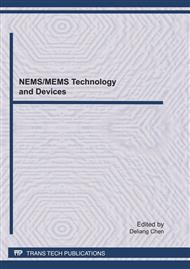p.144
p.148
p.152
p.155
p.159
p.163
p.167
p.171
p.175
Robust Sequential Flow Controls on the Centrifugal Platform
Abstract:
The stabilities of the burst frequencies of the capillary valves have a strong impact on the robustness of sequential flow controls on the centrifugal platform. In this study, factors which influence the burst frequencies of the capillary valves were investigated. It was found that the burst frequencies of the capillary valves were affected by the flow retardation effects. Hydrophobic treatment on the surface of the capillary valve is necessary in order to reduce the retention time of the liquid. In addition, by increasing the depth of the reservoir and conducting hydrophilic treatment on the surface of the reservoir, variations in burst frequencies of the capillary valves can be greatly reduced.
Info:
Periodical:
Pages:
159-162
Citation:
Online since:
May 2011
Authors:
Price:
Сopyright:
© 2011 Trans Tech Publications Ltd. All Rights Reserved
Share:
Citation:


